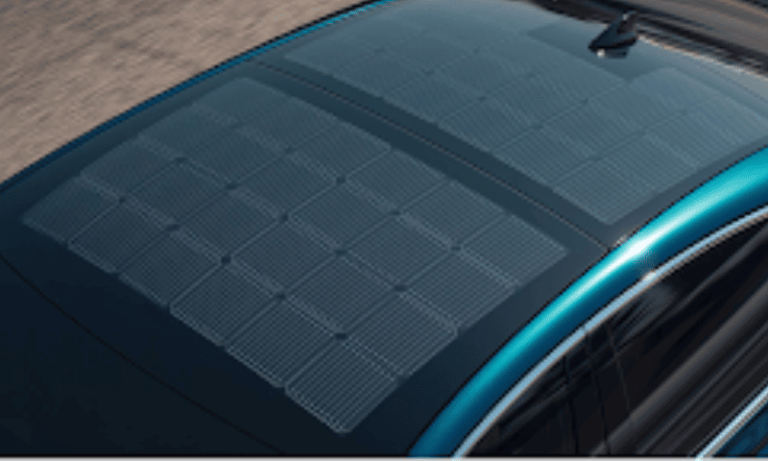Have you ever thought about adding solar panels to your Electric Vehicle (EV)? An increasing number of Aussies now have rooftop solar panels installed on their properties, reflecting the eagerness of many homeowners and business owners to move towards renewable energy.
Additionally, Australia has a net zero goal to reach by 2050, and the entire country is on the right track with more and more renewable energy projects in every state, and with more EVs on the roads.
Currently, the EVs we see on the roads do not disappoint—from Tesla, Polestar, BMW, Hyundai, and more. They all have impressive features, but have you ever seen an EV with solar panels on its roof?
The Genesis Electrified G80 is the first of its kind because the sedan has a solar roof panel, designed to add approximately 1,100km of driving range a year.
Solar roof panel of an EV
The Genesis G80 EV’s rooftop solar array is constructed from a photovoltaic silicon material that generates power that is delivered to the EV’s 87.2kWh battery when driving or parking; that’s like charging a car minus the plug. It can also charge the G80’s low-voltage 12V battery, adding more power to the EV’s features, such as its air-conditioning.
When the panel receives enough sunlight, it can produce energy that can power two 100W light bulbs or 11 LED fluorescent lamps.
Genesis
Genesis is one of the latest luxury brands to enter Australia. They have introduced new models that include two electric cars—and one of them is a G80. You can see the status of the rooftop panel on the charging screen with the panel on top of the G80.
The Genesis also has other green features, such as the hidden charging port in the front grill. You won’t see it until you need to use it, and once on a fast charger, the post can be unlocked.

Solar roofs on EVs: how effective are they?
Installing a solar roof on an EV has many benefits. One, it can extend the driving range and provide more power during the day. Another thing is that the solar cells in an EV can reduce the power draw on hot sunny days from the AC.
Charging costs will also be reduced because the solar panel on the roof can charge itself while the sun is out, and it will also let the battery charge even when there is no connection to the grid. Thus, it also protects the battery because it prevents its charge level from dropping too low when not in use. EV owners can also use the vehicle as a power source during a blackout.
On the other hand, a solar roof on an EV also has its drawbacks. An obvious disadvantage is that an EV with solar cells can be more expensive.
However, when you weigh the pros and cons of a solar roof on an EV, it’s clearly worth it.
Energy Matters has over 17 years experience in the solar industry and has helped over 40,000 Australian households on their journey to energy independence.
Complete our quick Solar Quote Quiz to receive up to 3 FREE quotes from trusted local installers – it only takes a few minutes and it’s absolutely no obligation.
A limitation of solar cells
One thing to keep in mind is that there is a limit to the number of solar cells that can be installed in a car. For example, the Genesis G80, a sedan, can only fit about two square meters of solar cells.
It is possible to increase the solar cells, as seen in the Lightyear One EV, where the manufacturer was able to hit five square meters of PV using the roof and bonnet.
Decarbonising transport in Australia
In June, three infrastructure peak bodies issued a new report to accelerate the transport sector’s journey to net zero. Currently, there are 46 recommendations to accelerate the decarbonization of the sector that sets out actions for industry and government to help support the drive.
reducing emissions, supporting renewables and investing in innovation, and promoting engagement and collaboration.
This is because the transport sector plays a key role in Australia’s net zero travel. However, there is still some work to be done and many things that industries and governments can do to improve.
The report identifies five areas that can support and drive action in the net zero sector. For one, a national and strategic approach that focuses on placemaking helps meet the long-term needs of the community.
Another thing is the need to introduce policies and investments that help develop an efficient, stable, and sustainable transportation system. It also emphasizes the importance of collaboration, education, and capacity building at all stages of the process.
The adoption and promotion of technological solutions, together with the implementation of management structures, is also necessary to facilitate the decarbonization of transport systems.
Are you ready to make your next car an EV? Book a test drive today!
